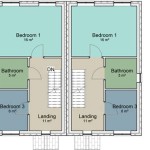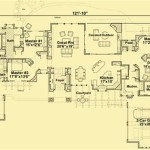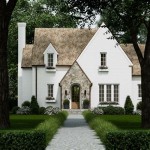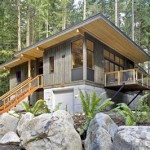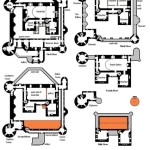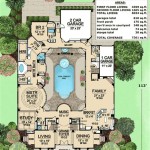Tiny house cabins are precisely what they sound like – small, cozy cabins. They are a popular choice for people who want to live a simpler life or who are looking for an affordable housing option.
Tiny house cabins come in a variety of shapes and sizes, but they are typically built on a small footprint. This makes them easy to transport and place on a variety of properties. Tiny house cabins are also typically built with sustainable materials, which makes them environmentally friendly.
If you are interested in learning more about tiny house cabins, read on. This article will provide you with all the information you need to get started, including tips for choosing the right plan, building your own tiny house cabin, and decorating your new home.
When choosing a tiny house cabin plan, there are a few important things to keep in mind:
- Size
- Layout
- Materials
- Budget
- Building codes
- Zoning restrictions
- Climate
- Lifestyle
- Needs
- Wants
By considering all of these factors, you can choose a tiny house cabin plan that is right for you.
Size
The size of your tiny house cabin is one of the most important factors to consider when choosing a plan. Tiny house cabins come in a variety of sizes, from as small as 100 square feet to as large as 400 square feet. The size of your tiny house cabin will depend on your needs and budget.
If you are planning to live in your tiny house cabin full-time, you will need to choose a plan that is large enough to accommodate your needs. This will include space for sleeping, cooking, eating, and bathing. You may also want to consider space for a living room, office, or guest room.
If you are planning to use your tiny house cabin as a vacation home or guest house, you may be able to choose a smaller plan. However, you will still need to make sure that the plan is large enough to accommodate your needs.
No matter what size you choose, make sure that the plan is efficient and well-designed. This will help you to make the most of your space.
Here are some things to consider when choosing the size of your tiny house cabin:
- How many people will be living in the cabin?
- What are your needs and wants?
- What is your budget?
- What are the building codes and zoning restrictions in your area?
- What is the climate like in your area?
By considering all of these factors, you can choose the right size tiny house cabin for you.
Layout
The layout of your tiny house cabin is another important factor to consider when choosing a plan. The layout will determine how you use the space in your cabin and how comfortable you are living in it.
There are a few different things to consider when planning the layout of your tiny house cabin:
- Flow: The flow of your cabin is important for both functionality and comfort. You want to be able to move around easily and access all of the different areas of your cabin without feeling cramped.
- Functionality: The layout of your cabin should also be functional. This means that you should have enough space for all of your needs, such as sleeping, cooking, eating, and bathing. You may also want to consider space for a living room, office, or guest room.
- Comfort: The layout of your cabin should also be comfortable. This means that you should have enough space to move around and relax. You should also make sure that the layout of your cabin allows for natural light and ventilation.
Here are some tips for planning the layout of your tiny house cabin:
- Start by drawing a floor plan of your cabin. This will help you to visualize the space and plan the layout.
- Consider the flow of your cabin. How do you want to move around the space? What areas do you need to access most frequently?
- Make sure that the layout of your cabin is functional. Do you have enough space for all of your needs? Is the space well-organized?
- Don’t forget about comfort. Make sure that the layout of your cabin allows for natural light and ventilation. You should also make sure that you have enough space to move around and relax.
By following these tips, you can plan a layout for your tiny house cabin that is both functional and comfortable.
Materials
The materials you choose for your tiny house cabin will have a big impact on the overall cost, durability, and sustainability of your home.
Here are some of the most common materials used to build tiny house cabins:
- Wood: Wood is a popular choice for tiny house cabins because it is relatively inexpensive, easy to work with, and durable. However, wood is also susceptible to rot and insects, so it is important to treat it properly.
- Steel: Steel is a strong and durable material that is resistant to rot and insects. However, steel is also more expensive than wood and can be more difficult to work with.
- Concrete: Concrete is a very durable material that is fire-resistant and pest-resistant. However, concrete is also more expensive than wood and steel and can be difficult to work with.
- Straw bales: Straw bales are a sustainable and affordable material that can be used to build tiny house cabins. Straw bales are fire-resistant and pest-resistant, and they can provide good insulation. However, straw bales can be difficult to work with and can be susceptible to moisture damage.
- Recycled materials: Recycled materials can be used to build tiny house cabins in a variety of ways. For example, you can use recycled wood, metal, or plastic to build the walls, roof, and floor of your cabin. Using recycled materials can help to reduce the cost of your cabin and minimize your environmental impact.
The best material for your tiny house cabin will depend on your needs and budget. If you are looking for a cost-effective and easy-to-work-with material, wood is a good option. If you are looking for a durable and fire-resistant material, steel or concrete is a good choice. If you are looking for a sustainable and affordable material, straw bales or recycled materials are good options.
Once you have chosen the materials for your tiny house cabin, you can begin to build your dream home.
Budget
The cost of building a tiny house cabin will vary depending on a number of factors, including the size of the cabin, the materials used, and the complexity of the design. However, it is possible to build a tiny house cabin for a relatively low cost.
Here are some tips for building a tiny house cabin on a budget:
- Choose a small plan. The smaller the cabin, the less it will cost to build.
- Use affordable materials. There are a number of affordable materials that can be used to build a tiny house cabin, such as wood, straw bales, and recycled materials.
- Keep the design simple. The more complex the design, the more it will cost to build.
- Do some of the work yourself. If you have the skills, you can save money by doing some of the work yourself, such as framing the cabin, installing the windows and doors, and finishing the interior.
- Shop around for materials and contractors. Don’t be afraid to shop around for the best prices on materials and contractors.
By following these tips, you can build a tiny house cabin on a budget without sacrificing quality.
Here is a breakdown of the average costs associated with building a tiny house cabin:
- Materials: $10,000-$20,000
- Labor: $5,000-$15,000
- Permits and inspections: $1,000-$2,000
- Contingency fund: $1,000-$2,000
The total cost of building a tiny house cabin will vary depending on the factors mentioned above. However, by following the tips in this article, you can build a tiny house cabin on a budget without sacrificing quality.
Once you have built your tiny house cabin, you can enjoy the many benefits of living in a small space, such as lower utility bills, less maintenance, and a simpler life.
Building codes
Building codes are regulations that govern the construction of buildings. These codes are in place to ensure that buildings are safe and habitable. Tiny house cabins are subject to the same building codes as other types of buildings. This means that you will need to obtain a building permit before you can start construction.
- Zoning restrictions: Zoning restrictions are regulations that determine what types of buildings can be built in a particular area. These restrictions are in place to ensure that the character of a neighborhood is maintained. You will need to check with your local zoning board to see if tiny house cabins are allowed in your area.
- Foundation requirements: The foundation of your tiny house cabin must be strong enough to support the weight of the cabin. The type of foundation you need will depend on the soil conditions in your area. You will need to hire a qualified contractor to design and build the foundation for your cabin.
- Structural requirements: The structural components of your tiny house cabin must be strong enough to withstand the forces of nature, such as wind and snow. The structural requirements for tiny house cabins are the same as the structural requirements for other types of buildings. You will need to hire a qualified contractor to design and build the structure of your cabin.
- Electrical requirements: The electrical system in your tiny house cabin must be installed according to the National Electrical Code. This code is in place to ensure that electrical systems are safe and efficient. You will need to hire a qualified electrician to install the electrical system in your cabin.
Building codes are in place to protect the health and safety of the public. By following these codes, you can ensure that your tiny house cabin is safe and habitable.
Zoning restrictions
Zoning restrictions are regulations that determine what types of buildings can be built in a particular area. These restrictions are in place to ensure that the character of a neighborhood is maintained. Tiny house cabins are a relatively new type of housing, so they may not be specifically addressed in the zoning codes of all areas.
If you are considering building a tiny house cabin, the first step is to check with your local zoning board to see if they allow tiny house cabins in your area. If tiny house cabins are not specifically addressed in the zoning codes, you may need to apply for a variance. A variance is a permit that allows you to build a structure that does not comply with the zoning code. Variances are typically granted on a case-by-case basis.
When applying for a variance, you will need to demonstrate that your tiny house cabin will not have a negative impact on the neighborhood. You will need to provide information about the size, design, and location of your cabin. You may also need to provide information about your plans for the use of the cabin.
If you are granted a variance, you will be able to build your tiny house cabin according to your plans. However, it is important to note that variances are not always granted. If you are denied a variance, you may need to modify your plans or choose a different location for your cabin.
Zoning restrictions can be a challenge for tiny house cabin builders. However, by working with your local zoning board, you can increase your chances of getting your cabin approved.
Climate
The climate in your area will have a big impact on the design of your tiny house cabin. You will need to consider the following factors:
- Temperature: The temperature in your area will determine how much insulation you need in your cabin. If you live in a cold climate, you will need to make sure that your cabin is well-insulated to keep the heat in. If you live in a warm climate, you may not need as much insulation.
- Precipitation: The amount of precipitation in your area will determine how well your cabin needs to be protected from the elements. If you live in an area with a lot of rain or snow, you will need to make sure that your cabin has a good roof and that the walls are properly sealed.
- Wind: The wind in your area will determine how strong your cabin needs to be. If you live in an area with high winds, you will need to make sure that your cabin is built to withstand strong winds.
Once you have considered these factors, you can start to design your tiny house cabin. If you live in a cold climate, you may want to consider using thicker walls and more insulation. If you live in a warm climate, you may want to consider using thinner walls and less insulation. If you live in an area with a lot of precipitation, you may want to consider using a metal roof and sealing the walls properly. If you live in an area with high winds, you may want to consider using stronger building materials.
By considering the climate in your area, you can design a tiny house cabin that is comfortable and safe to live in.
Here are some additional tips for designing a tiny house cabin for different climates:
- Cold climates: Use thicker walls and more insulation. Consider using a metal roof and sealing the walls properly. Install a wood stove or fireplace to provide heat.
- Warm climates: Use thinner walls and less insulation. Consider using a metal roof and sealing the walls properly. Install a ceiling fan to circulate the air.
- Areas with a lot of precipitation: Use a metal roof and seal the walls properly. Install gutters and downspouts to direct water away from the cabin. Consider using a rain barrel to collect rainwater.
- Areas with high winds: Use stronger building materials. Consider using a metal roof and hurricane straps to secure the cabin.
By following these tips, you can design a tiny house cabin that is comfortable and safe to live in, no matter what the climate.
The climate in your area is just one of the many factors that you need to consider when designing your tiny house cabin. By taking the time to consider all of the factors, you can create a cabin that is perfect for your needs.
Lifestyle
Your lifestyle will also have a big impact on the design of your tiny house cabin. If you are planning to live in your cabin full-time, you will need to make sure that it has enough space for all of your needs. This will include space for sleeping, cooking, eating, bathing, and storage. You may also want to consider space for a living room, office, or guest room.
If you are planning to use your cabin as a vacation home or guest house, you may be able to choose a smaller plan. However, you will still need to make sure that the plan is large enough to accommodate your needs. You may also want to consider adding features that will make your cabin more comfortable and enjoyable, such as a fireplace, a hot tub, or a screened-in porch.
No matter what your lifestyle, there is a tiny house cabin plan that is right for you. By considering your needs and wants, you can create a cabin that is perfect for your lifestyle.
Here are some additional things to consider when choosing a tiny house cabin plan that fits your lifestyle:
- How often will you be using the cabin? If you are planning to live in the cabin full-time, you will need to choose a plan that is large enough to accommodate your needs. If you are planning to use the cabin as a vacation home or guest house, you may be able to choose a smaller plan.
- What activities will you be doing in the cabin? If you plan on spending a lot of time cooking, you will need to choose a plan with a well-equipped kitchen. If you plan on entertaining guests, you may want to choose a plan with a large living room or dining area.
- What are your storage needs? If you have a lot of belongings, you will need to choose a plan with plenty of storage space. This may include closets, drawers, and shelves.
- What are your budget constraints? Tiny house cabins can range in price from a few thousand dollars to over $100,000. It is important to set a budget before you start shopping for plans.
By considering these factors, you can choose a tiny house cabin plan that is perfect for your lifestyle and your budget.
Needs
Sleeping
One of the most important needs to consider when choosing a tiny house cabin plan is sleeping. You will need to make sure that the plan has enough space for a bed that is comfortable for you. You may also want to consider adding a loft or sleeping nook to create more sleeping space.
Cooking
If you plan on cooking in your tiny house cabin, you will need to make sure that the plan has a well-equipped kitchen. This will include a stove, oven, refrigerator, and sink. You may also want to consider adding a pantry or storage space for your food and cooking supplies.
Eating
You will also need to consider where you will be eating in your tiny house cabin. The plan may include a dining table and chairs, or you may want to create a more casual eating space with a breakfast bar or banquette.
Bathing
A bathroom is another important need to consider when choosing a tiny house cabin plan. The plan may include a full bathroom with a shower, toilet, and sink. If you are short on space, you may want to consider a smaller bathroom with a composting toilet or a wet bath.
Storage
Storage is also an important consideration when choosing a tiny house cabin plan. You will need to make sure that the plan has enough storage space for your belongings. This may include closets, drawers, shelves, and cabinets.
By considering your needs, you can choose a tiny house cabin plan that is perfect for you.
Wants
In addition to your needs, you may also want to consider some wants when choosing a tiny house cabin plan. Wants are things that would make your cabin more comfortable, enjoyable, or unique. Here are a few things to consider:
- Outdoor space: If you enjoy spending time outdoors, you may want to choose a plan that includes a deck, porch, or patio. This will give you a place to relax and enjoy the fresh air.
- Fireplace: A fireplace can add warmth and ambiance to your cabin. It can also be used for cooking or heating your cabin on cold nights.
- Laundry facilities: If you don’t want to do laundry by hand, you may want to choose a plan that includes a washer and dryer. This will make it much easier to keep your clothes clean.
- Guest room: If you plan on having guests over, you may want to choose a plan that includes a guest room. This will give your guests a place to stay when they visit.
Of course, you don’t have to include all of these wants in your tiny house cabin plan. Choose the ones that are most important to you and that fit within your budget.










Related Posts


